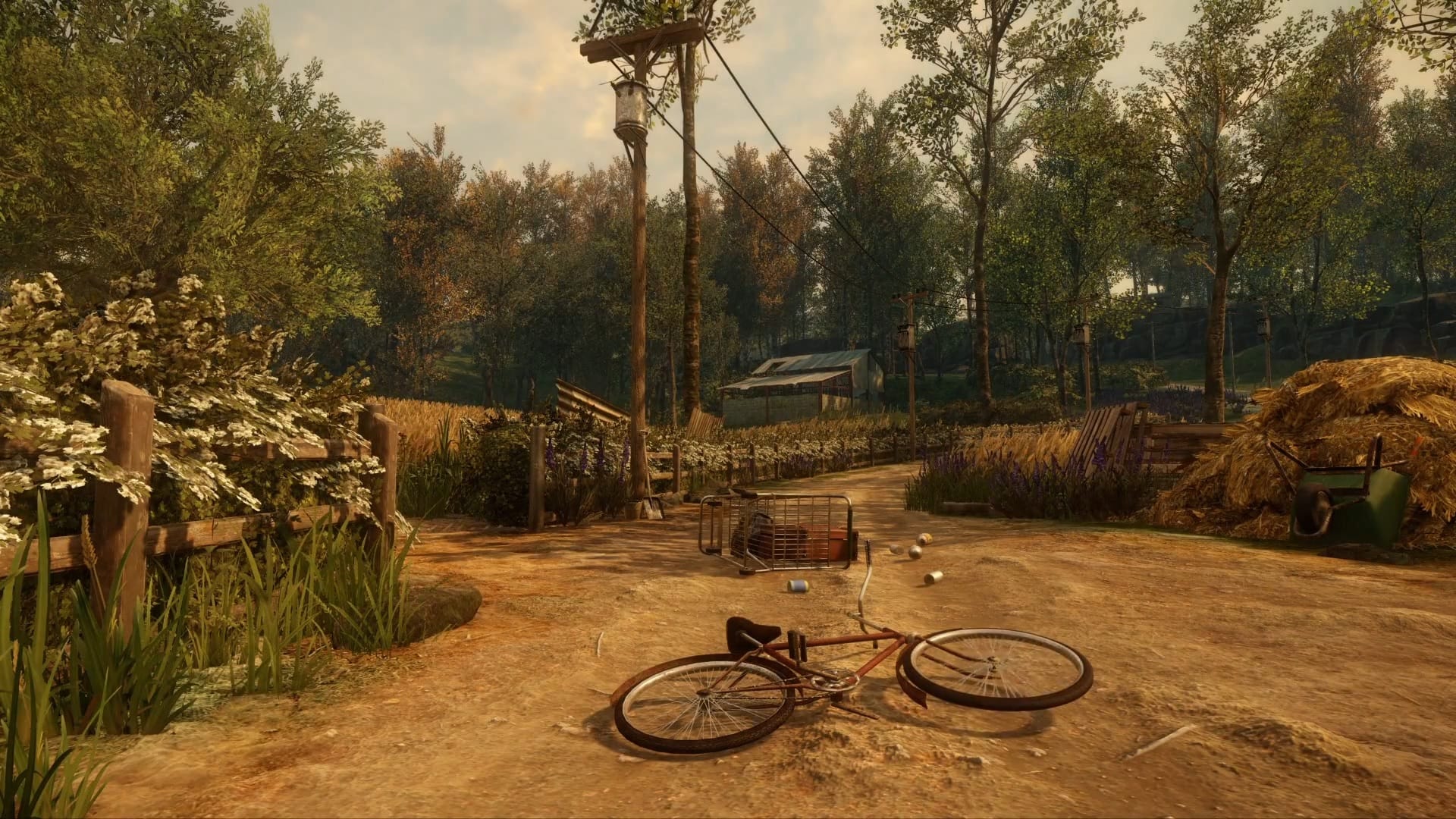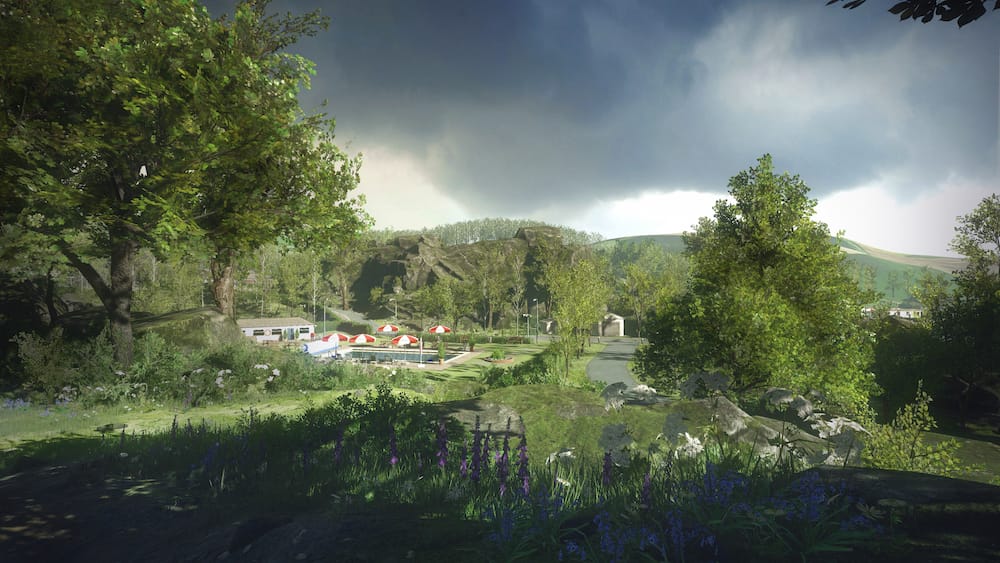Everybody’s Gone to the Rapture and a More Human Kind of Apocalypse

The Rapture is an explicitly Christian concept, but Christianity doesn’t have a monopoly on being concerned with the end of the world. Move away from the specific term “Rapture” and there are beliefs about the ultimate fate of the universe everywhere—in all of the Abrahamic religions, in the traditions of most every culture across the globe, and in the secular realms of science and the humanities. Everyone has some opinion on how our existence is going to come to an end.
Videogames understand this preoccupation. Countless titles, from the long-running Fallout series to 2013’s The Last of Us, are set in the aftermath of cataclysmic events. They show players their worst fears—the destruction of the world they know—as a way of exploring what a new human society might look like. Despite the constant reminder of the pre-apocalyptic world that backdrops their stories, they are essentially forward-looking. The removal of the old provides opportunities for new ways of living to arrive. Much like the Christian Rapture, these games are about wiping the slate clean in order to rebuild society.
They show players their worst fears—the destruction of the world they know
The Chinese Room’s Everybody’s Gone to the Rapture is more concerned with using the end of the world as a means of exploring our very real past and present. It’s not about imagining an alternate, reordered version of society so much as looking at what the idea of the apocalypse means for people of the here and now.
///
Rapture is set in 1984, and takes place in Yaughton, a fictional rural town located in the real-world Shropshire, England. In it, the player character navigates a magical realist version of the mundane—country roads, winding through wheat fields, are suddenly illuminated by trails of ethereal light; the sidewalk next to a tall hedgerow flickers as ghostly figures appear, sharing small town gossip with one another. In The Chinese Room’s vision of the end of the world, the familiar hasn’t been destroyed. People—even vanished people—still seem like real, relatable figures.
Dan Pinchbeck, The Chinese Room’s Creative Director, isn’t from Shropshire, but he did grow up in the 1980s, in an area of England’s southern coast that shares the “rolling green hills and farmland” of Rapture’s Yaughton. Pinchbeck’s game is set in a time and place where the pastoral ideal of England—a “green and pleasant land of contented sheep and cricket on the village green,” as he told me—was at constant odds with Cold War nuclear anxieties, “whole [unionized mining towns] being targeted for destruction by the government” and “gay culture being blamed for creating a disease that’s going to kill everyone.”

“It was a very uneasy time,” Pinchbeck says. “There was a distinct sense of end times about the whole thing. There was an absolute shadow of the bomb, AIDS, huge social unrest, burgeoning new technologies.” Placing these concerns within the context of a rural town, where, “for many people, ‘the world’ had a range of 10, 20, 30 miles” allows The Chinese Room to explore the theme of small communities trying to make sense of their traditional values running up against the rapid changes occurring in late-20th century politics, culture, and technology.
The struggle between entrenched outlooks and cultural progress is a common phenomenon, regardless of geography, but it’s probably a more dramatic process in areas of the world where communities have roots in the land stretching back centuries. Aside from the isolation of rural life, the sort of English towns Yaughton evokes are filled with a “sense that they probably haven’t changed much in the last thousand years—[that] change has passed them by.” Everybody’s Gone to the Rapture purposely emphasizes this idea through characters archetypal enough that they “feel like they grew out of the land” and a soundtrack inspired by England’s “pastoral classical, folk, and choral traditions.” The cast is made up of the sort of people who experience the world through the newspaper and who view any upsetting of tradition with fear. As Pinchbeck puts it: “I remember when Boy George first popped up on TV when I was a kid, and it was like a cultural atom bomb going off.”
the 1980s was a time of festering anxieties
In 1984, in the isolation of a small English town, it could be easy for almost any aspect of modernity to seem like a foreshadowing of the end of days. Like their real-world counterparts, Yaughton’s citizens might be frightened by an immigrant family moving into their homogenous village “because it’s change and change is terrifying.” This was the year that Apple originally brought the Macintosh to market, and Yaughton’s residents may view the progress of technology with suspicion. Rapture’s setting appears a microcosm of a moment in time when, as Pinchbeck phrases it, the historic tendency for “the battle between tradition and change” is at a particularly disconcerting height.
On a slighter scale, Everybody’s Gone to the Rapture’s small town location also represents a cross section of mid-‘80s English society, a narrative choice that frames the apocalypse in distinctly human terms. This isn’t entirely surprising: The Chinese Room’s prior commercially released games—2012’s Dear Esther and 2013’s Amnesia: A Machine for Pigs—were both examinations of broad topics presented through the lens of intimate character studies. In Rapture, the studio sought to take a similar approach, portraying the end of the world by focusing on the population of a rural village attempting to understand how to process a fundamentally changed reality.
“We were really interested in this idea that if the world ended it would still be the small human things that mattered,” he says. “You can’t conceive of a city going up in smoke, but you can empathize with a parent waiting for their child to come home from school.”

Pinchbeck stresses Rapture’s concern with the familiar—with its vision of the apocalypse being one defined, like the Cold War media of his 1980s youth, by “the things you know being shredded and discarded.” The people inhabiting Yaughton are meant to convey a real community (compared to its predecessor, Rapture is “much more of an ensemble piece”) whose beliefs, worries, relationships, and politics shape their outlook on the game’s catastrophe. While the goal of the game is to unravel the mystery of what, exactly, has happened to Yaughton—and possibly the entire world—the experience is focused on the personal. “The end of the world shouldn’t be an abstract thing,” Pinchbeck says. “This is about people, the end of humanity.”
The logo image attached to many of Rapture’s trailers—a silhouetted couple, holding hands against a stark, blank background—reflects this desire to illustrate the importance of human connections in the face of unthinkable change. After A Machine for Pigs’ delve into the horrors of the modern age, The Chinese Room wanted to create a game “about the good in people.” Pinchbeck wanted to make something that demonstrated that “the small acts of kindness or togetherness . . . make life worth living.”
///
It’s tempting to dwell on the last word in Everybody’s Gone to the Rapture’s title, but Pinchbeck is quick to point out that what his studio has created isn’t “a religious game.”
“It’s less about the Rapture than a Rapture,” Pinchbeck says. “[The Rapture is] an idea that has quite powerful and specific connotations, but it’s a way of describing something—of understanding something that reaches more widely and deeply, I think, into the human psyche.”
the idea that everything we know could just up and disappear
Despite its traditional connotations, the Rapture doesn’t have to involve religion at all to maintain relevance. The end of the world is a fundamentally human concern; the idea that everything we know could just up and disappear is an enduring terror and one that often feels justified, given our tendency for violence and destruction. Pinchbeck is an atheist who was raised Christian and, though he admits that his writing often involves issues related to his (lack of) faith, it’s the foundational concepts of the Rapture, not theological rationale, that inspired the game.
“There’s something so powerful about the idea of an empty world,” he says. “That sense of isolation and mystery is pretty universal—the idea that everyone has vanished and left you behind. It taps into a very basic set of human fears and emotions and that’s what we really wanted to work with.”

Even though the game is set in 1984, in the English countryside, its doomsday theme is, like the idea of the Rapture itself, a basically human concept. Change is always on the horizon, regardless of the time or place we live in and, because the unknown is inherently confusing, the typical reaction is the kind of fear that births apocalyptic predictions. This is something that, as Pinchbeck notes, “people have been grappling with for thousands of years.” It’s unlikely that this will ever change.
It’s natural for our art to reflect our worries—for it to pull handfuls of anxiety from our collective subconscious in order to better expose and examine them. There are few concerns more primal than death; the death (and possible rebirth) of everything we know is an obvious extension of this. Everybody’s Gone to the Rapture is, in this sense, a variation on one of the oldest possible themes. What makes it novel for a videogame isn’t its subject matter, but its focus on the reason we care about apocalyptic fiction at all: its ability to say something about where our species has come from and where we may be going.



